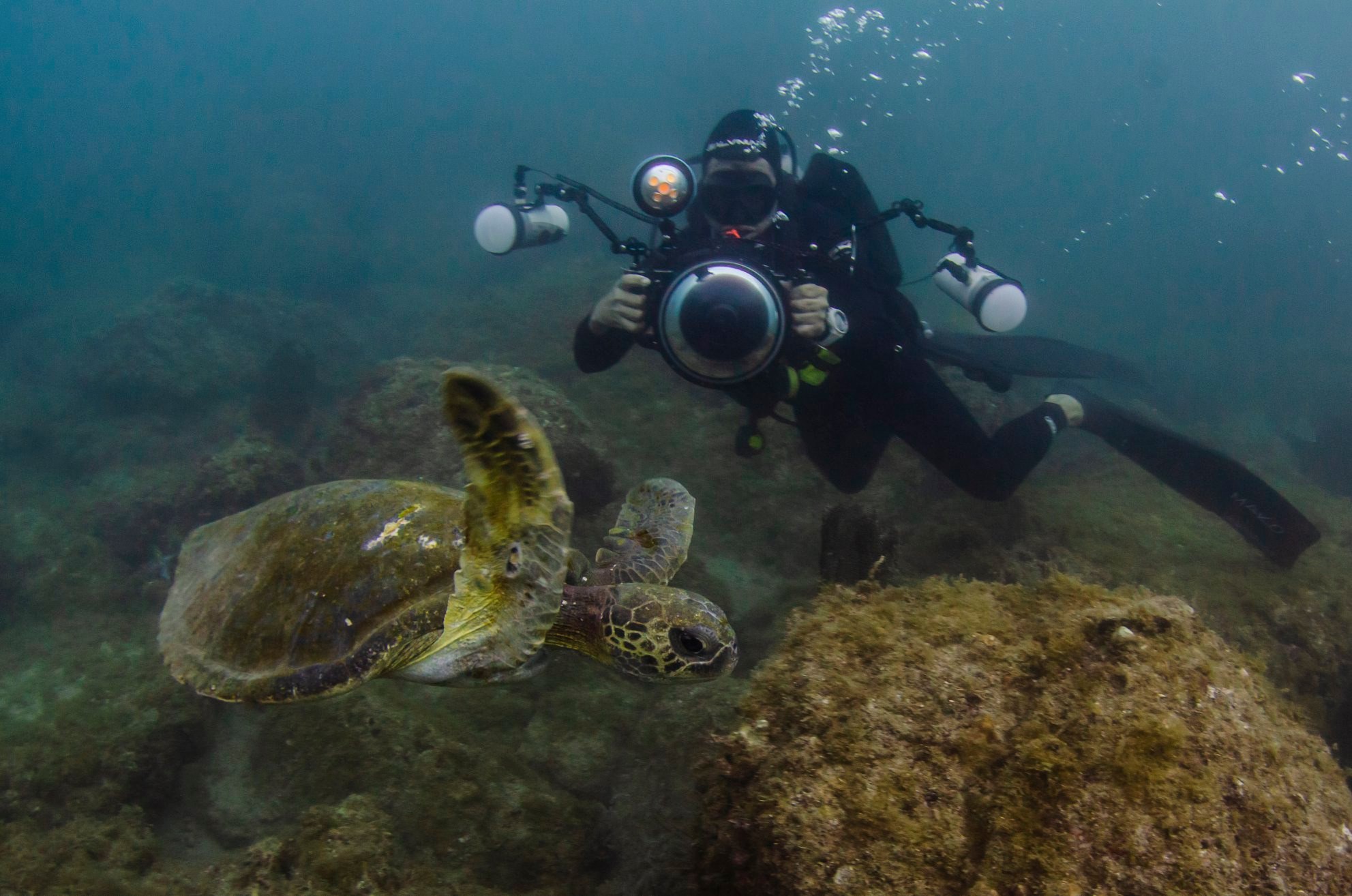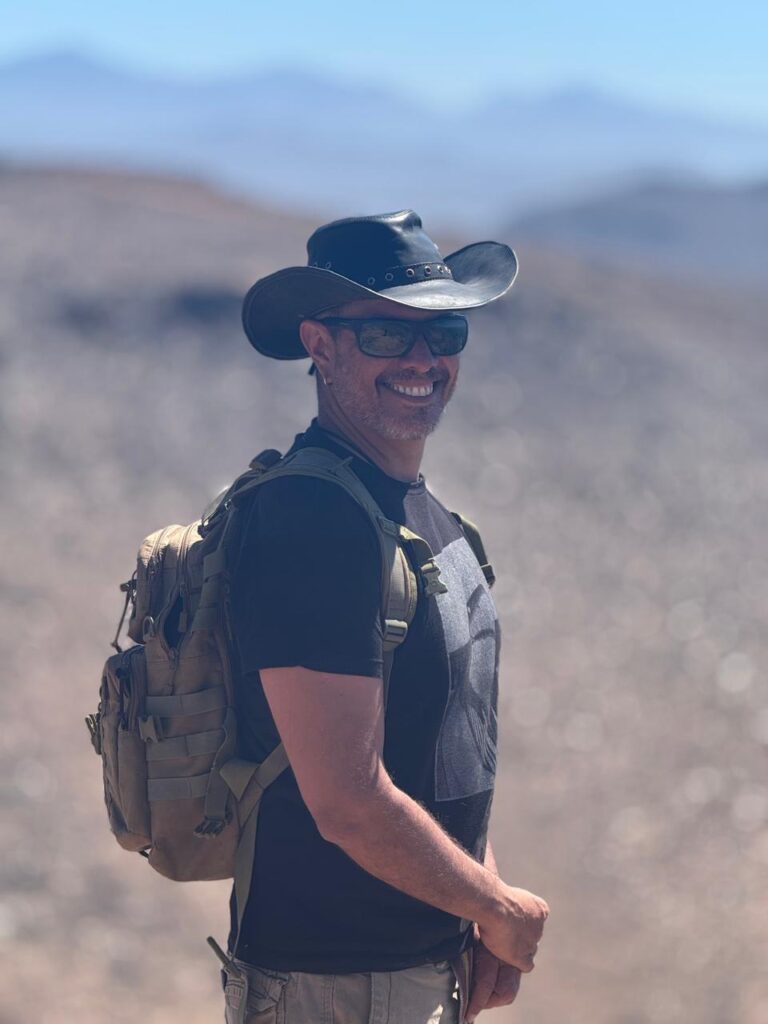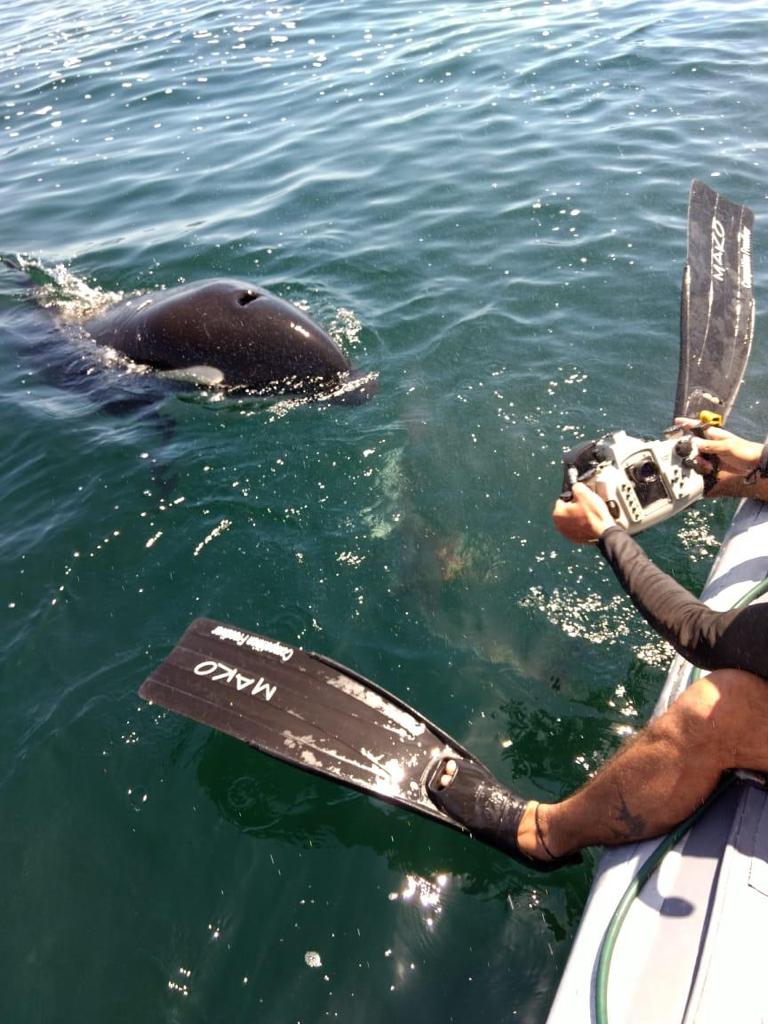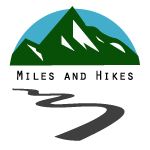
I am Leonardo Gonzalez, photographer, explorer, and profound nature lover. From a very young age, I grew up surrounded by the sea and the jungle landscapes of my native Venezuela. My mother owned a beachfront restaurant, and I remember that, at six years old, when she gave me my first goggle, I put my face in the water and saw some tiny fish… that image marked me forever, and I can remember it vividly, as if it had happened a few minutes ago.
But it wasn’t all about the sea. I also spent a good part of my childhood and youth on ranches, among horses, jungles, and dirt roads. Those days riding, listening to stories by the fire, and exploring trails covered in vegetation taught me to respect and love every corner of nature, from the depths of the ocean to the most remote hills.
For a good part of my life, I dedicated myself professionally to nature photography and videography, especially focusing on marine life. And now, I combine all that material, along with my experience in the countryside and the jungle, to create visual stories that I share through my own YouTube project. My greatest passion is to showcase those places, those people, and those moments that hold the pure essence of the land, the sea, and tradition, with respect, poetry, and truth.

01) What inspired you to start exploring the most remote corners of Baja California?
I’m an extremely curious person; when something interests me, I focus on learning as much information as possible about it, exploring every aspect of it. That curiosity is combined with a deep inclination toward nature and a constant need to find spaces where the pure essence of the land and sea can still be experienced. This peninsula is an untamed, wild territory full of contrasts: endless deserts, rugged mountain ranges, and a sea teeming with life that, at times, seems to belong to another planet. I was always intrigued by what lay beyond the last paved road. I wanted to discover those places that few people talk about.
02) Have you had any unexpected encounters with marine or terrestrial wildlife that left a lasting impression on you?
Many… but I’ll limit myself to what happened to me here on the peninsula. A few years ago, around 2016, when orcas were still more of a rumor than a common sight, now that people are constantly looking for them, I stumbled across a pod of whales swimming in the sea, teaching their young how to hunt. We followed them for a while and filmed them with the drone, and at one point I said: I’m going to go in the water. But just as I was about to go in, an orca approached me, splashed me with its water jet, and was carrying a mobula in its mouth, just like cats do when they bring you mice as a gift. Honestly, I didn’t go in the water… it was a tremendous scare.
Another day, I was running on the La Paz boardwalk, in the panoramic area, and suddenly I saw some jets of water very close to the shore. At first, I didn’t think anything of it, because it’s very common to see dolphins around there. But suddenly, I started noticing things that weren’t typical of dolphins, until I saw the jets coming out at an angle… a sure sign they were sperm whales. In the most unexpected place. I couldn’t believe it. I remember I had time to go down the hill, grab an Uber, go home, pick up the drone, return… and there they were! Almost at the edge of the seawall, eleven sperm whales. Surreal.
It was one of those moments when you understand that there are things you only experience, and that no camera, no matter how good, can fully convey.

03) Have you ever been stranded in a remote location? How did you get out of that situation?
Not exactly… I don’t consider myself special, nor do I want to sound arrogant, because the truth is these things can happen right around the corner. What is true is that I am extremely cautious. Although I sometimes do things that may seem risky, I always keep the risk factors under control. For starters, I drive very slowly. I’ve had enough car accidents in my life, and it seems pointless to put your health at risk just to get from point A to point B faster. That, in itself, takes a lot of care of the vehicle.
Also, I’m very religious about maintenance; that’s really key. And when I go out, I always carry enough equipment and supplies to avoid a bad time. The peninsula is extremely remote, and getting out of a bad situation can take forever if you don’t have the risk under control.
And finally, I also know my limits. For example, I’m not the best at driving on sand… it drives me a little crazy, and I don’t like it because of the turtle thing, so I avoid it. That means I’m not very good at it, but I prefer to stick to what I know how to drive well.
04) What advice would you give to someone who wants to start exploring Baja on off-road routes, but doesn’t know where to begin?
Simply start. Of course, with absolute respect for nature and the local people. The peninsula isn’t just landscapes, it’s a living culture. Listening to the people of these places is an exceptional experience, and they’ll always have something valuable to tell you, a corner worth visiting or a story that will leave you thinking.
My advice is to be very curious. Explore from home; we’re in an incredible time where tools like Google Earth allow you to discover places, plan routes, and dream up adventures. But when you go out, never do so without a physical map—and learn how to use it. Also, bring an offline navigation app—that’s essential.
Very important: always tell someone you trust what your route will be, and bring more water than you think you’ll need. In this land, water is life, and it’s better to have too much than not enough.
05) What has been the biggest challenge you’ve faced in your explorations, and how did you overcome it?
For me, the biggest challenge when I’m exploring is learning to weigh things up. I often say to myself, “I’ll come back later,” or, on the contrary, I want to do everything in one go without considering how prepared I am, how much time I really have, or if it’s the best time to do it. A bad habit I have is that I tend to be very short on time, and I end up exploring places I should be spending much more time in, especially when it comes to photography. I’m always rushing through them, and that sometimes works against me, because in these remote places, things happen at their own pace, and you can’t force the light, the tide, or the timing.
06) What gear should you always pack when you go exploring?
Water…the rest can always be taken care of!

07) What motivated you to start your YouTube channel and share your adventures with the world?
Wow, I’d been thinking about doing something on YouTube for about ten years, but I always sabotaged myself and thought I didn’t have much to say. Until one day, I just started, and whatever, and then you make your way, I suddenly regret not having done it sooner.
For years, I did a lot without sharing much. But one day, I realized that if I didn’t show that beauty, others might never know it existed. I was motivated by the desire to document, to protect through sharing, and to inspire others to take care of what we have. The channel was born as a window to the world so that those who can’t be here can experience, even if it’s just a little, the magic of these places through my eyes. I continue to experiment.
08) How do you balance living the adventure with documenting it for the camera, without losing the magic of the moment?
There’s no balance, hahaha. Right now I’m a one-man band: I film, drive, fly the drone, edit, and try to stay creative… and a little sane, though not much, hahaha. I think over time I’ve learned that adventure is about including everything and enjoying it as it comes.
It’s difficult, but I’ve also learned not to obsess over capturing everything. First I enjoy, breathe, observe… and then I take out the camera. There are moments that are just for me, without recording. And then, yes, you’re stuck recording until the last leaf falls. That’s something I love about this: here you are your director, your boss, your competition, and your own enemy to beat. You make the rules, you decide how to live it and what to share.
09) Which video surprised you the most in terms of audience reaction, and why do you think it resonated so much?
The video about El Pardito. It was impressive to see how people connected with the images, the story, and the messages I wanted to convey. I think it resonated so much because it wasn’t just a tourist video, but rather a love letter to the place, its history, its sea, and its inhabitants, both human and marine. People felt that authenticity, that way of showing a place with respect, with poetry, without filters or poses, not as just any tourist destination, but as a living place, full of soul. I think that’s what made the difference and why it resonated with so many people.
10) How do you imagine your channel’s evolution in the coming years? What dreams or goals would you like to achieve with your content?
Hmm, hard to answer. If you’d told me a year ago I’d be where I am, I would have burst out laughing. So, it may all be surprising, but getting philosophical, I want it to become a living archive of the nature I’ve seen during my time in this life, a space where expeditions, science, culture, history, and conservation come together. I’d like to make long-form documentaries, collaborate with biologists, archaeologists, and local fishermen. I dream of traveling the entire Gulf of California documenting its islands and their stories, and expanding my horizons as well. And if one day I can take that message to a larger platform, even better… but always maintaining the essence: telling stories that come from the heart of this land. And obviously, I want it to become my way of life, since no one lives on air, haha!
FIND LEONARDO GONZALEZ PHOTOGRAPHY AT:
YouTube
Instagram
